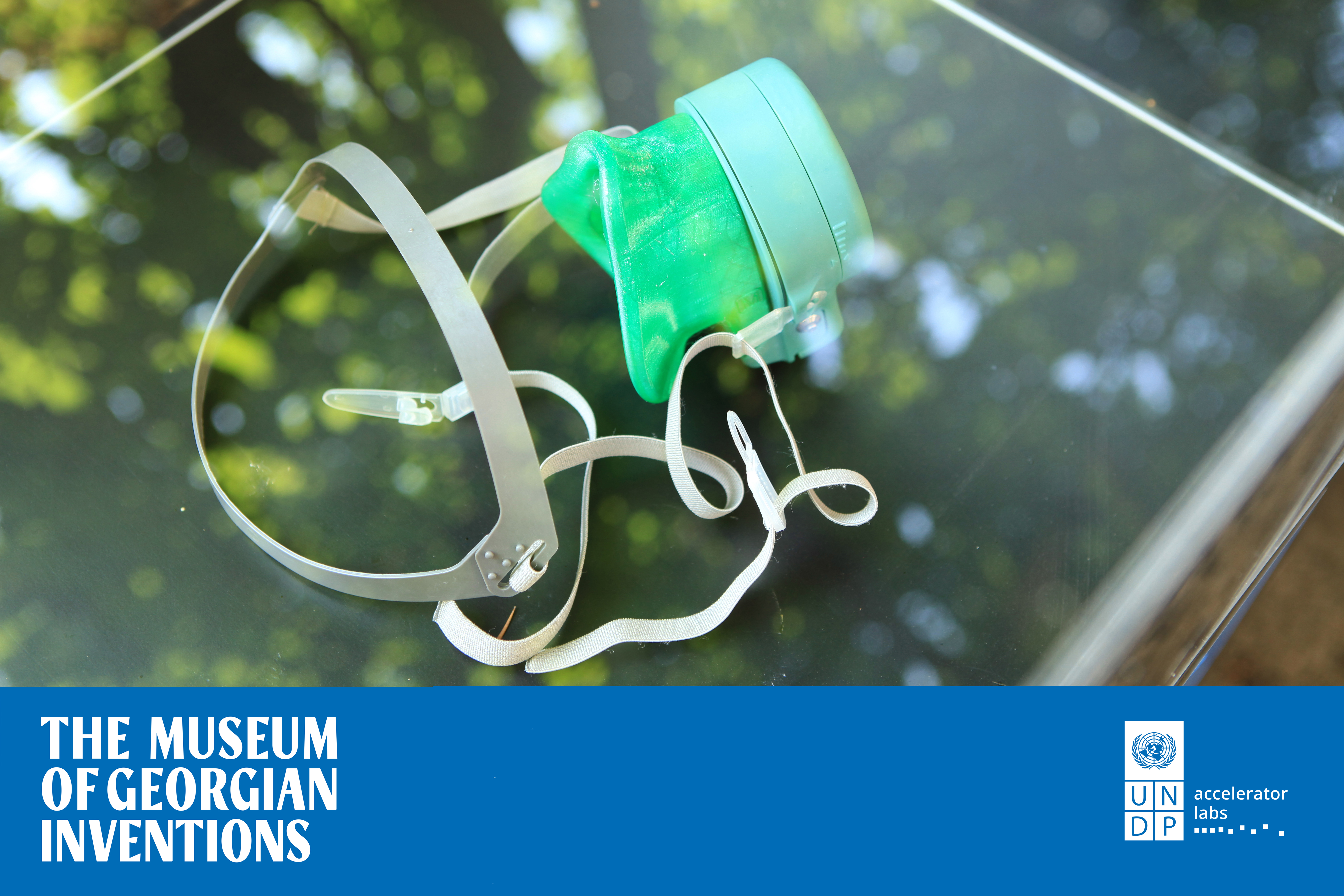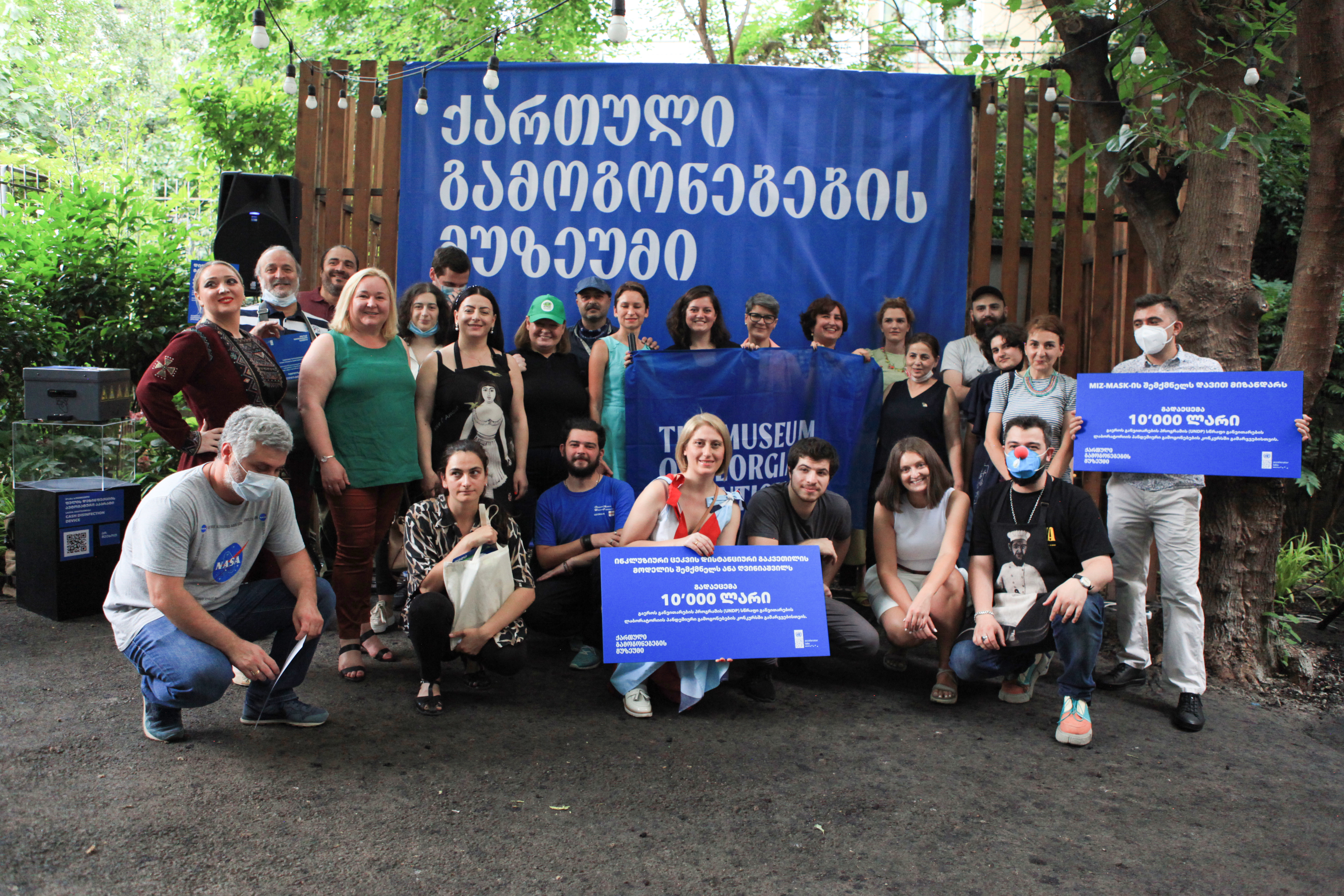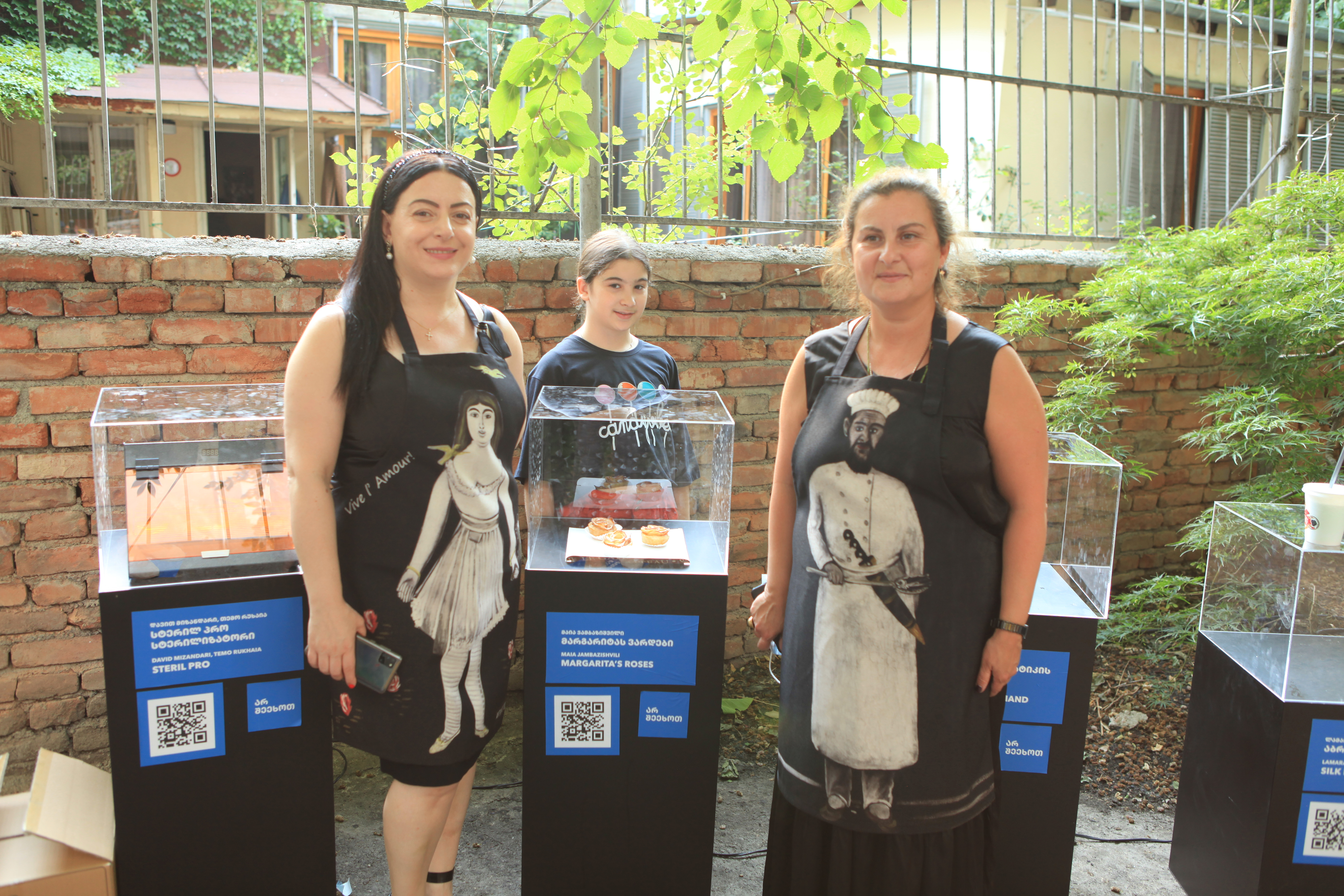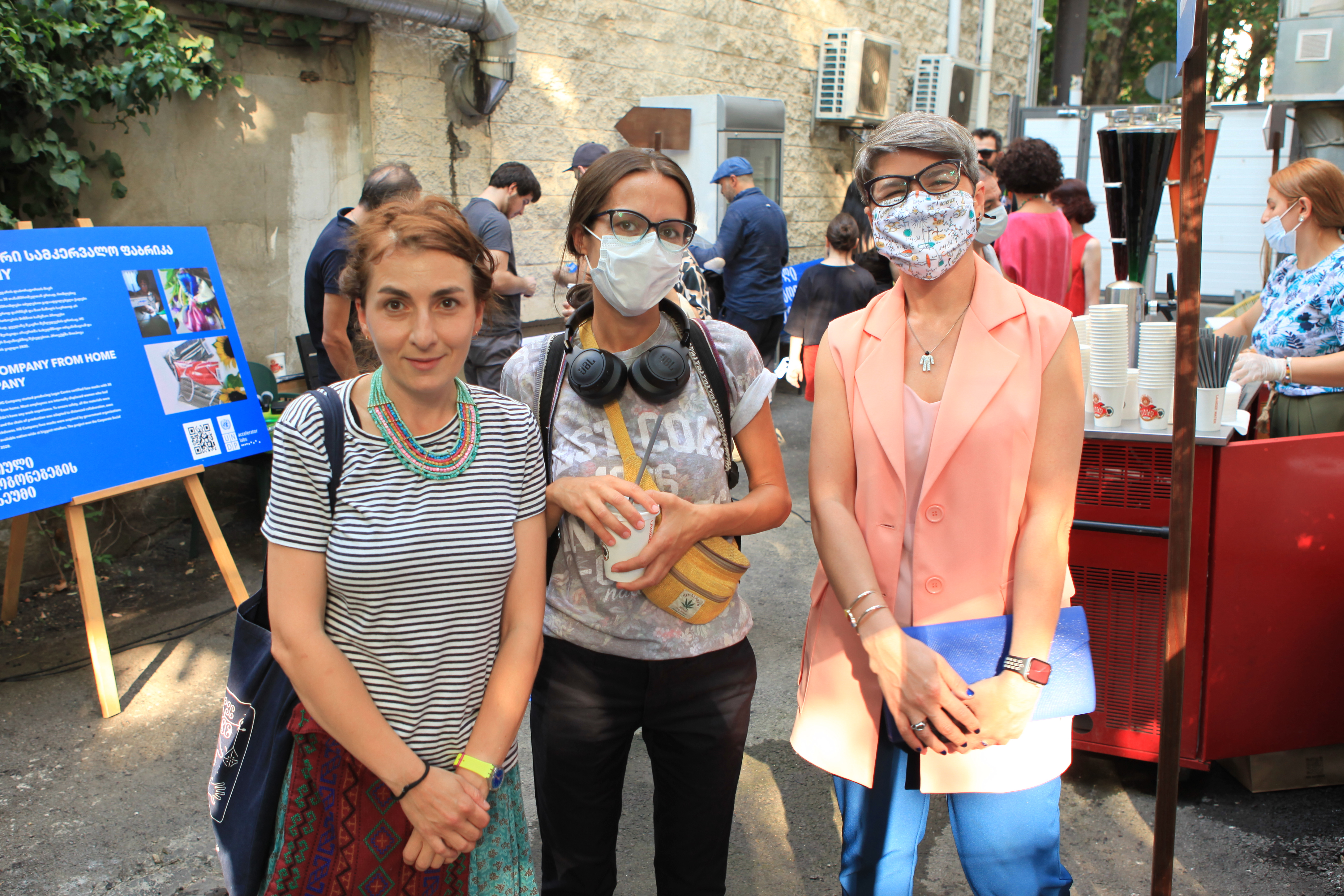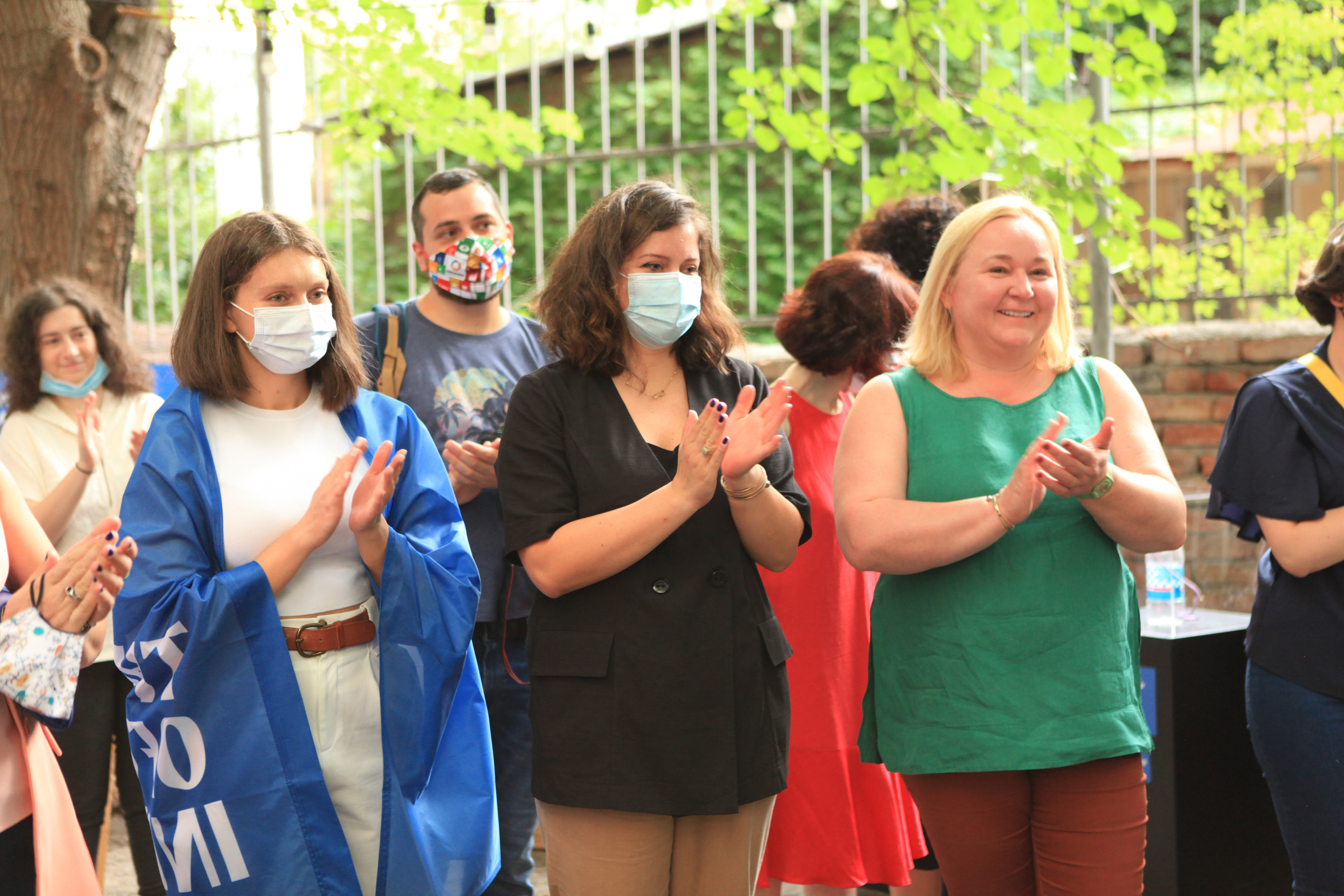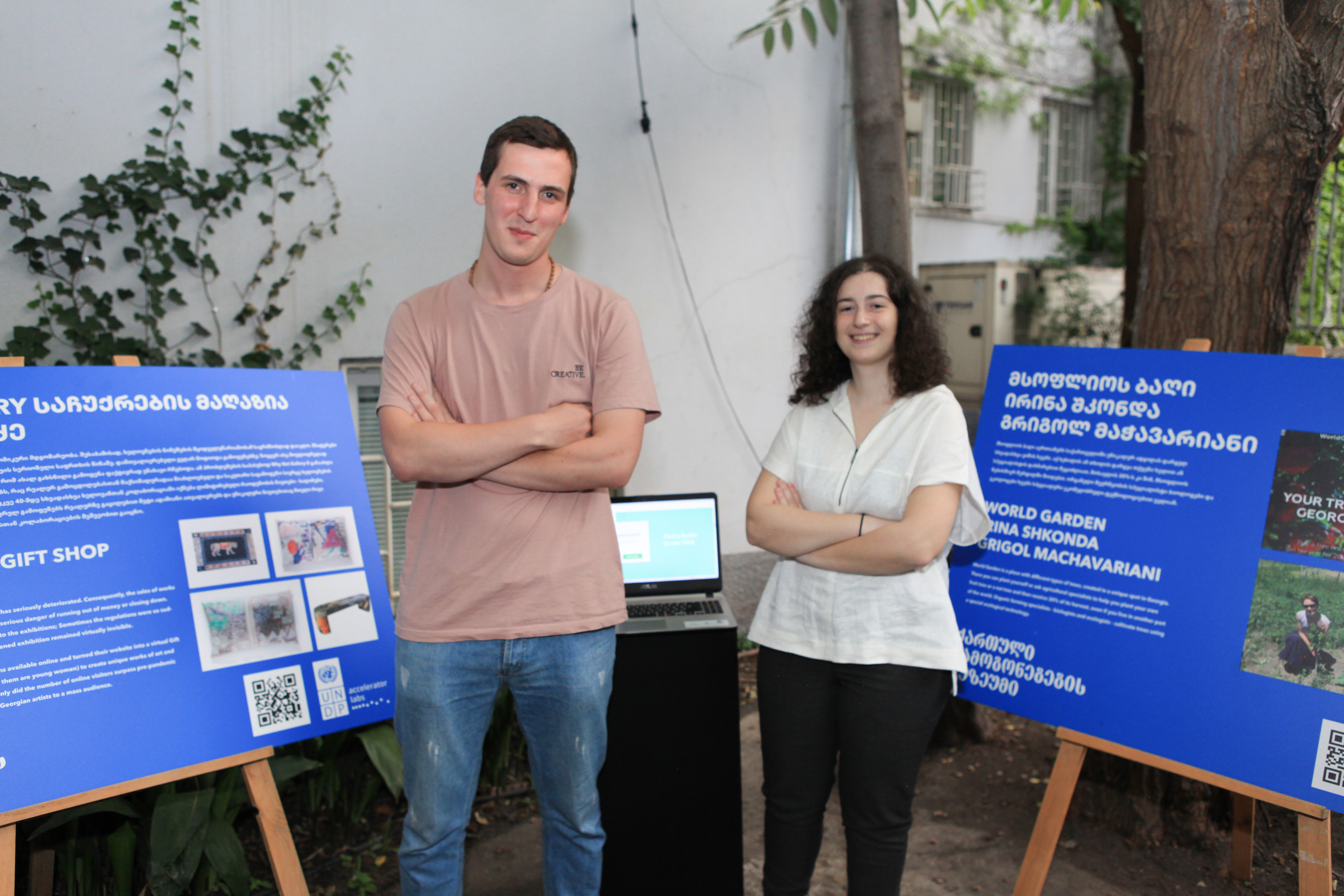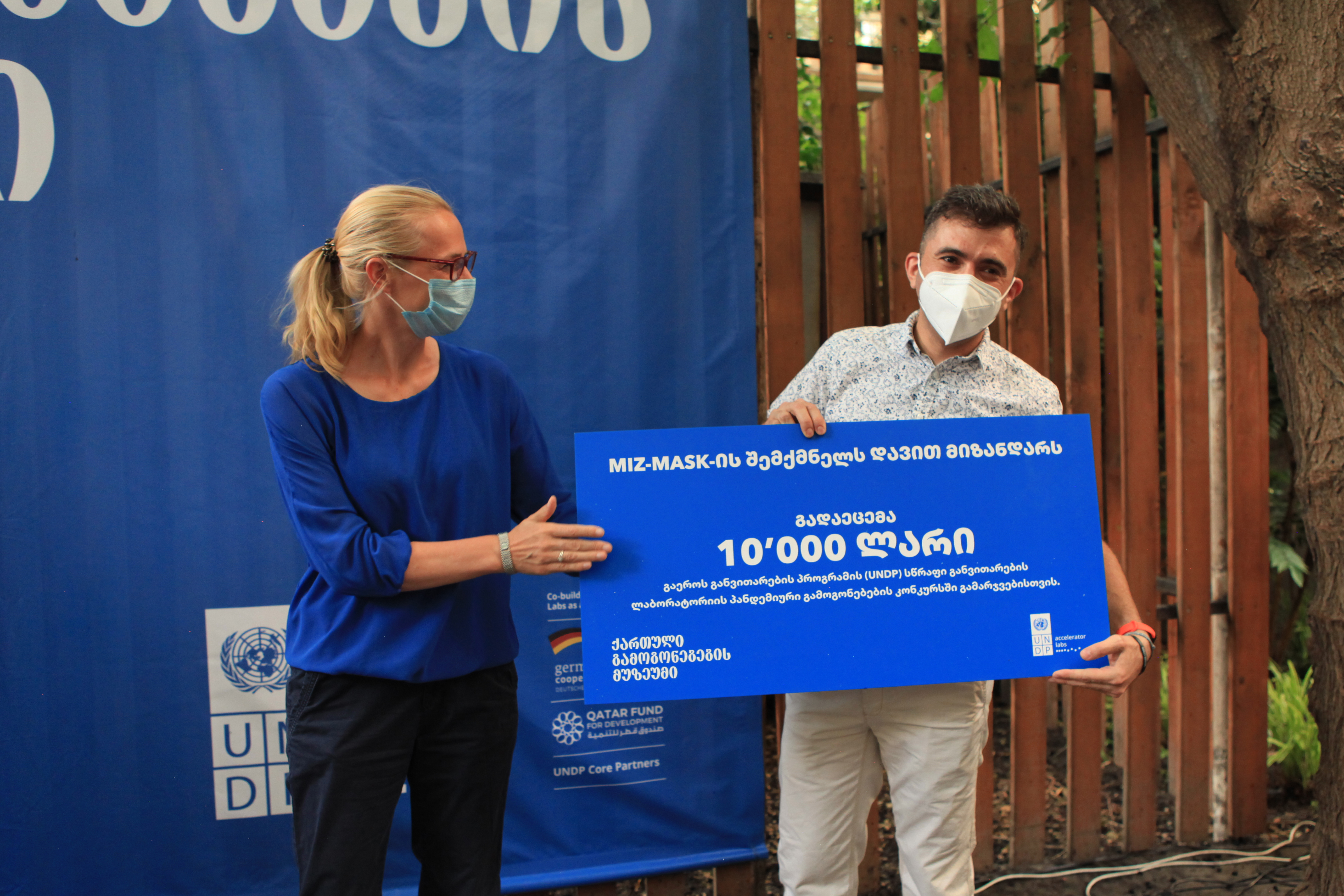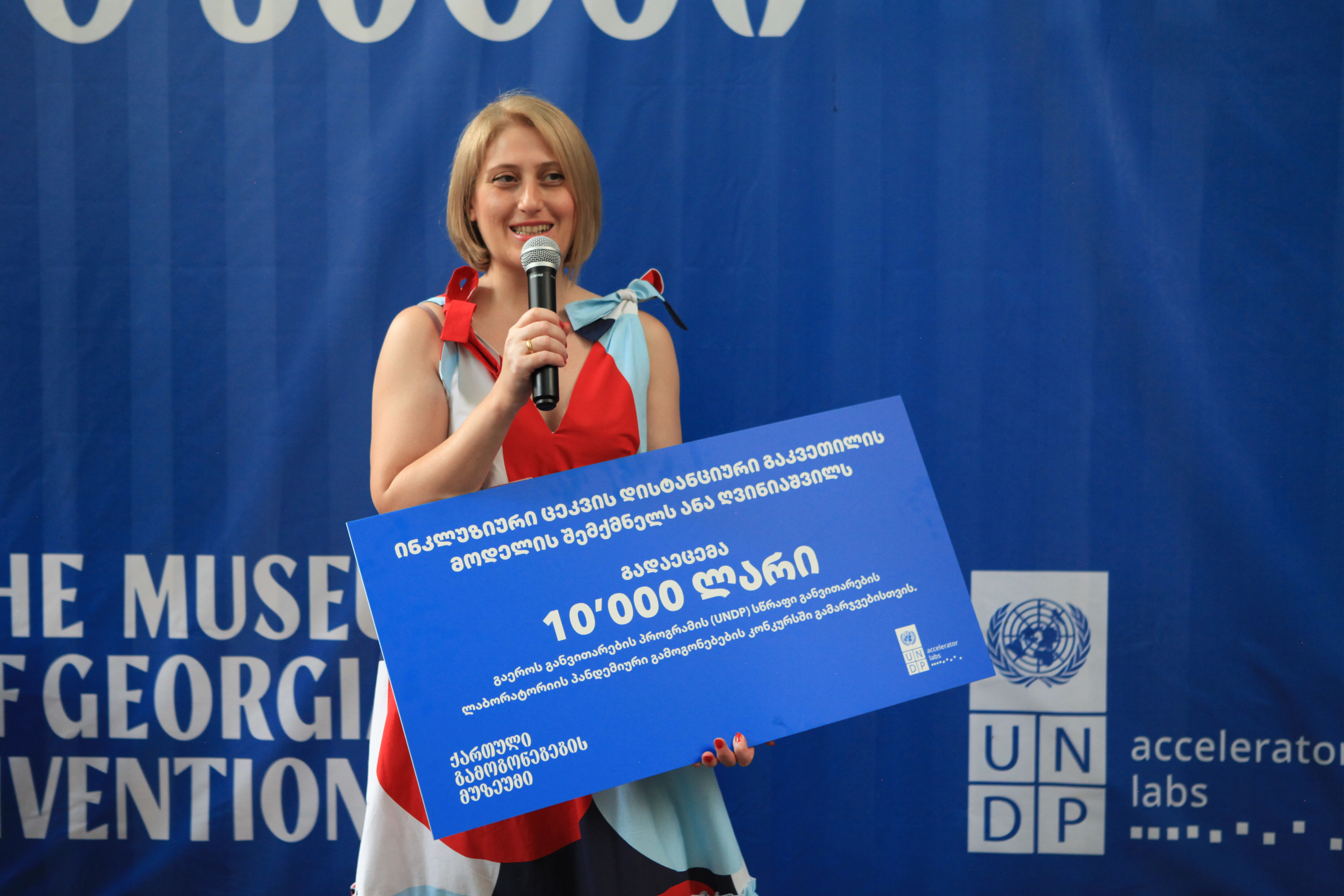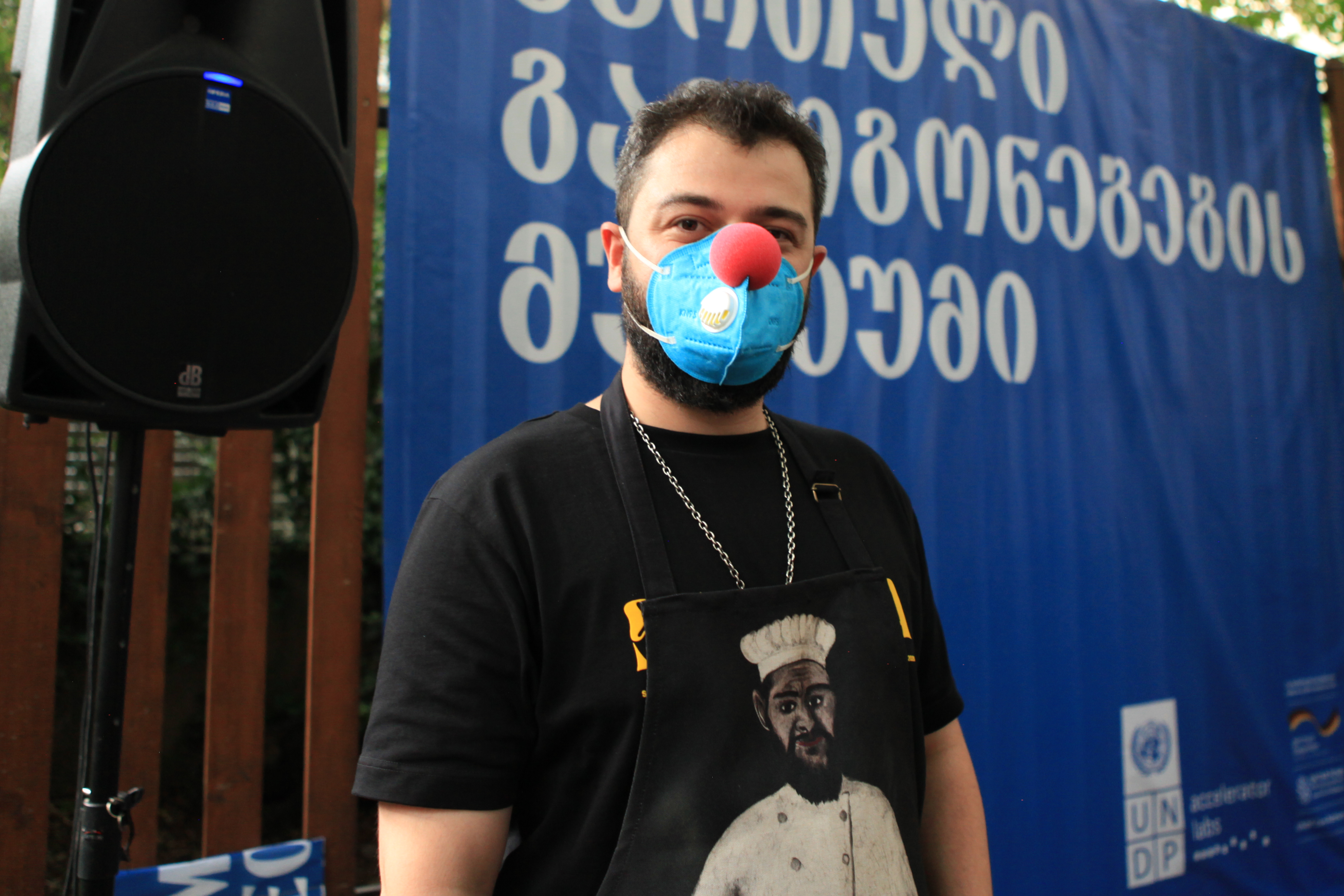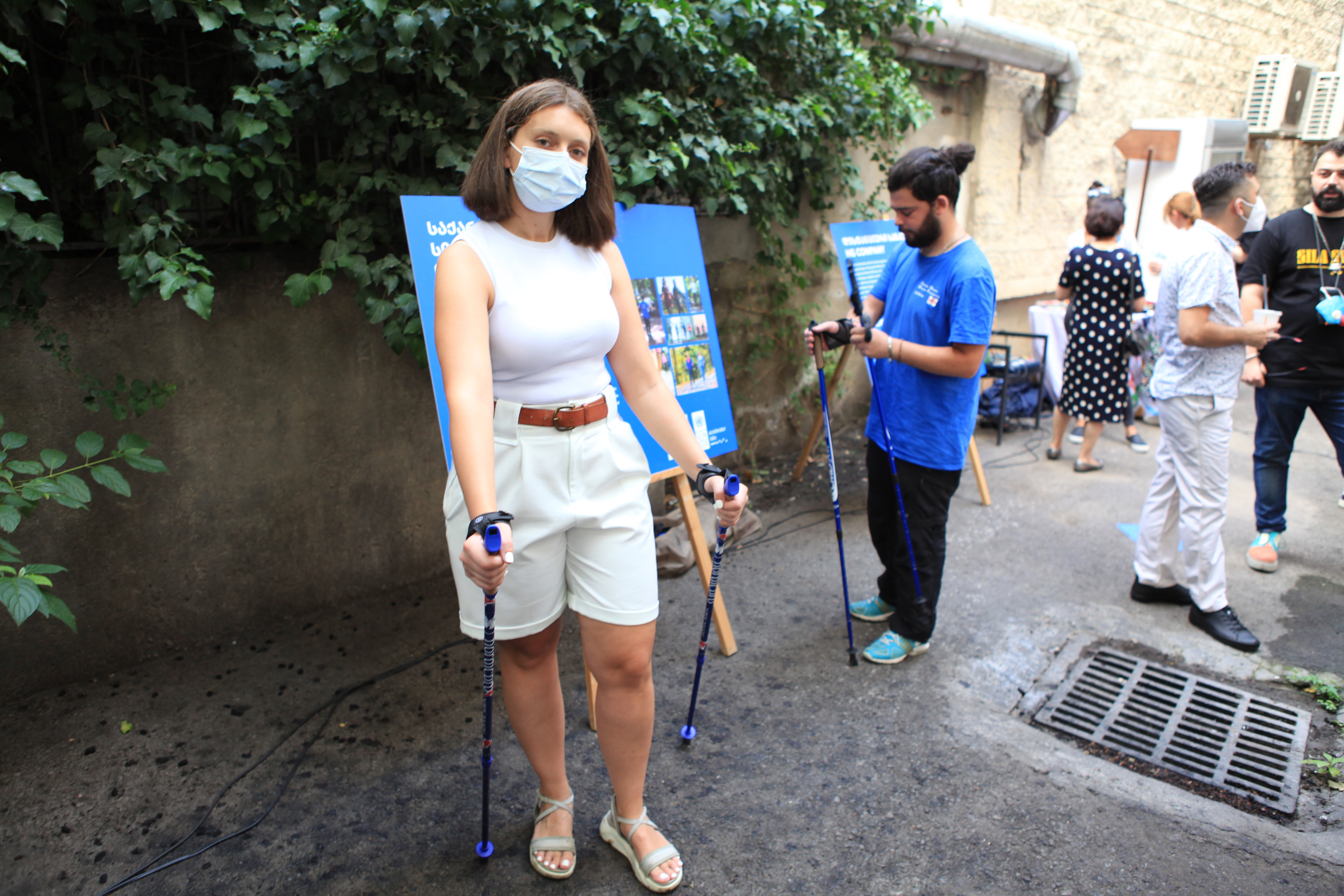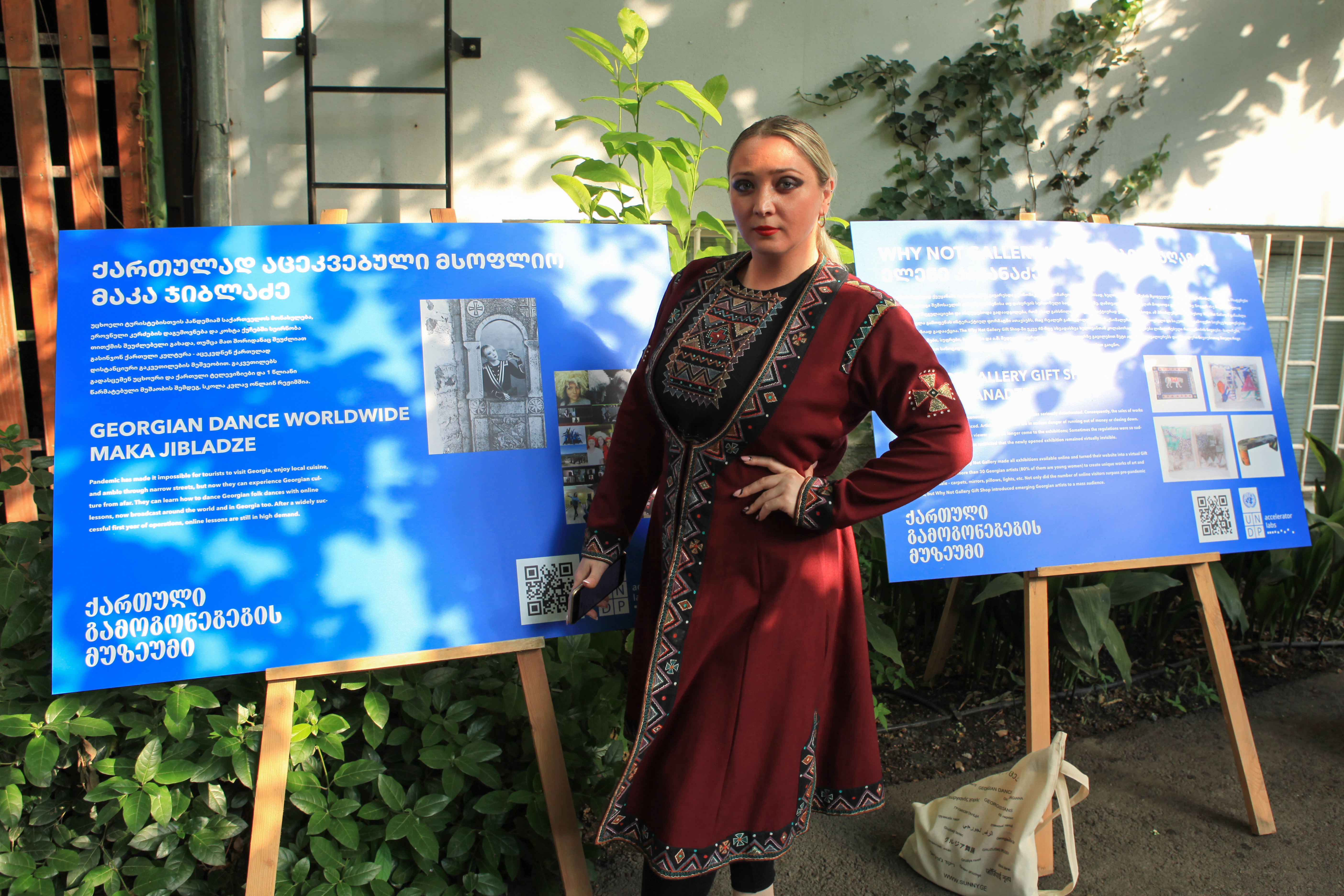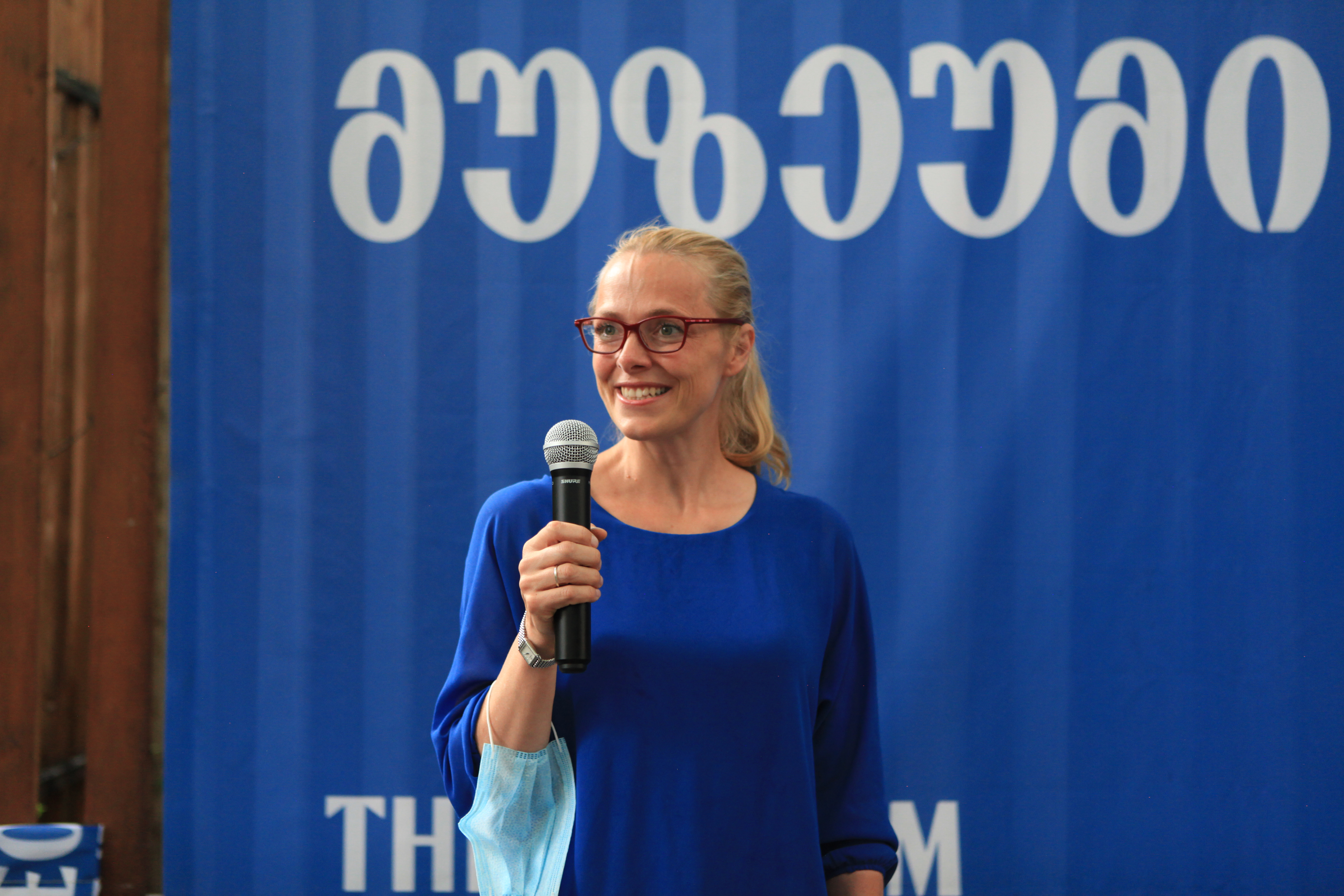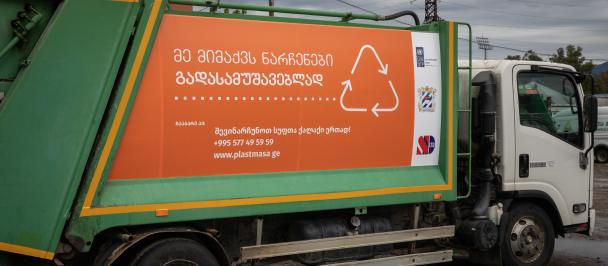We established the Museum of Georgian Inventions to boost grass-roots development. What happened next was beyond our expectations...
Museum of inventions: Nation building through grass-roots solutions
July 30, 2021
Invention by David Mizandari. Photo: Nino Zedginidze/UNDP
At the UNDP Accelerator Labs (“AccLabs”), we firmly believe that people who have encountered a particular problem often find intelligent, easy, and — most importantly — locally adaptable ways of solving it. However, too many times, such solutions go unnoticed or unshared by others who are struggling with similar problems.
This is why around the globe, UNDP AccLabs took on the role of solutions mappers. Identifying, supporting and scaling up locally-sourced solutions has nurtured participatory, bottom-up, creative solutions to development issues. Last spring, AccLab Georgia also initiated its first Solution Safari to find local grass-roots inventions that make daily life during the pandemic better. One of the core activities of the safari included establishing the virtual Museum of Georgian Inventions for communications purposes with the broader public.
During our Solutions Safari, we learned that the Museum of Georgian Inventions is about more than hosting grass-roots solutions; it redefines the story we as a nation tell ourselves about our capacity to creatively innovate and solve problems. Most importantly, it creates an opportunity to decolonise our recent history.
A short history of the Museum of Georgian Inventions
In April, COVID-19 cases were still relatively high, vaccines were unavailable, and the shelter-in-place order was still in place. Despite this background, the country was preparing to lift most of its regulations and reopen for the upcoming tourist season. Recognizing the clear priority of finding smart, creative solutions to ease the burden of pandemic challenges, UNDP Georgia’s AccLab decided to run its first Solution Safari, a ‘by the people, for the people’ call for inventions.
Under ‘normal’ circumstances, we would identify local solutions by visiting different regions of the country. However, because pandemic restrictions prohibited this approach to mapping, we decided to make our first Safari a ‘virtual’ adventure — we collected solutions digitally. We announced the first Solutions Safari to coincide with and celebrate UN Innovation Day. This was a call for solutions or rather a contest with a prize fund of 20,000 Georgian Lari (~6500 USD) to be awarded to the winning solutions, with an intention to motivate grassroots innovators across the country.
We faced the question of how to attract a large number of innovators and creative thinkers — or, rather, doers — that might not otherwise consider participating in a contest. As mentioned above, many grass-roots solutions go unnoticed or overlooked (the 2015 film ‘Joy’ is a good example of it). Thus, we needed a creative communication campaign that could reach regular citizens, amateur innovators, grass-roots organizations and small-scale businesses that found innovative ways to cope with the pandemic. To do so, we partnered with Giorgi Avaliani of Holymotors, an award-winning creative director. As a result of this extraordinary collaboration, the idea of the Museum of Georgian Inventions was born.
We chose to focus our efforts beyond running a one-off idea competition — we used the competition to springboard the establishment of the Museum of Georgian Inventions, a permanent virtual platform to present solutions in a curated atmosphere; more than a mere list of projects, the museum-like approach to showcasing solutions enhance the value of grass-roots innovations and creative problem solving as such.
Currently located on Facebook and Instagram, the Museum’s pages highlight 19 solutions that were carefully selected from 62 applications we received for the contest. The selected ideas explore and provide tested solutions to a wide range of challenges the pandemic poses to everyday life. The creative solutions include protective equipment against the virus, inclusive distance teaching protocols, basic hygiene tools, new-normal-proof sports, games and inclusive services.
Which is better, a virtual or a real-life museum?
Choosing virtual space was a safe choice — every day, 60 percent of the Georgian population uses Facebook, and 8 percent uses Instagram, according to a 2020 study. Museum content was streamlined for mobile users, who comprised the majority of all visitors. Within the frames of our communication campaign, we reached more than 500 000 people. And, thanks to the recent rapid digital transformation (one of the few positive pandemic effects), a “virtual museum” no longer sounds odd.
In addition to the virtual museum, we celebrated the selected winners of the Solutions Safari with a small in-person awards ceremony and a physical pop-up exhibition in the UN House courtyard (all activities complied with COVID-19 regulations and safety protocols).
The opportunity to be physically together and the chance to see the actual inventions with our own eyes made the idea of searching for and supporting grass-roots innovation extremely tangible and very grounded.
Photo: Nino Zedginidze/UNDP
Photo: Nino Zedginidze/UNDP
Photo: Nino Zedginidze/UNDP
Photo: Nino Zedginidze/UNDP
Photo: Nino Zedginidze/UNDP
Photo: Nino Zedginidze/UNDP
Photo: Nino Zedginidze/UNDP
Photo: Nino Zedginidze/UNDP
Photo: Nino Zedginidze/UNDP
Photo: Nino Zedginidze/UNDP
Photo: Nino Zedginidze/UNDP
Museum shopping (for prospective donors)
No museum is complete without an exit shop! We adapted this component to the Solutions Safari - aka the Museum of Georgian Inventions - too. Although shortlisted candidates had an opportunity to advertise (and even sell) their solutions and services at the pop-up exhibition, the main ‘shopping’ the AccLab arranged was for possible donors and supporters of these paradigm-shifting inventions.
The lab continues to support the selected ideas by sharing information with relevant programmes and networks to facilitate further integrate grass-roots solutions into mainstream development approaches
To find the most standout proposals among all submitted ideas, we gathered an esteemed jury composed of representatives from the private sector, academia and donors (including the Embassy of Germany to Georgia and, of course, UNDP). The jury chose two winners: Davit Mizandari, for developing Miz-Mask, a unique rechargeable respirator with a UV filter that provides N99-level protection from virus and bacteria, and Anna Ghviniashvili, for developing a science-backed online model for an inclusive dance class, which provides adequate physical exercises and socializing opportunity for children with disabilities - the group that is especially affected by the pandemic. The two winners each received GEL 10,000 (~3200 USD) equivalent support to improve or upgrade their ideas and to put them into practice.
The most important lesson the Museum taught us was about nation building
During our communications campaign, we took to the streets and asked strangers, “what is the most important Georgian invention?”
Many of the interviewed residents of Tbilisi thought that the most important inventions were either Georgian dishes or entertainment-related activities such as dancing and singing. It was not surprising, but still a bit unsatisfying. Georgians generally don’t see themselves as technology inventors, but rather as entertainment stars. This might not be bad in the era of shows like Georgia’s Got Talent and TikTok influencers, but it is a constructed story rooted in our colonial past — the Russian and Soviet empires.
To break these silos, we as a nation need to rediscover our capacity to innovate and create in other fields as well, be it science, engineering or entrepreneurship.
To do so, we will need to change the story we tell ourselves as a nation; dedicated Museums of Inventions could be key players in this regard. Because “museums,” as one article puts it, could “be deployed to help us cope with our troubles and to flourish, both individually and collectively.”

 Locations
Locations

